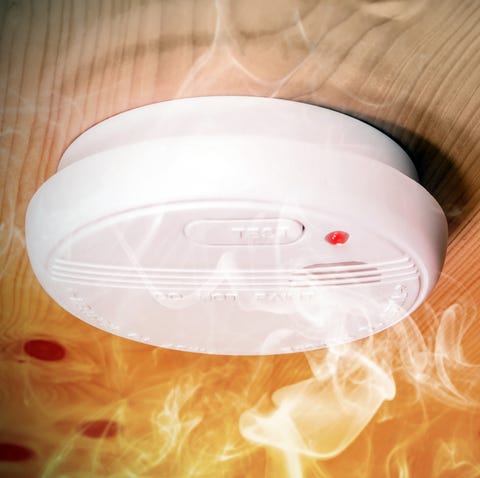It’s even more important than fixing your clocks.

Daylight saving time officially starts this weekend on Sunday, March 8, at 2 a.m. While your phones and computers will automatically “spring forward” one hour earlier, you’ll still have to check your ovens, microwaves, and most importantly, your smoke detectors — at least according to safety experts.
The two times a year we change our clocks also serve as a valuable reminder to change the batteries in our fire alarms. Only 57% of Americans have followed best practice and done so in the past six months, according to a survey of more 1,000 people conducted by ServiceMaster Restore.
When you go around your house on Sunday, you’ll want to replace the batteries in each detector, advises disaster restoration expert Peter Duncanson. Bonus: Doing it now will also prevent the purposefully annoying “chirping” reminder later on.
Here’s what you need to do:
- Lift, twist, or remove the cover. (In some cases, the whole alarm will come off from a base.)
- Replace the battery with a brand-new one. Most machines use 9-volt batteries.
- Close and snap the detector back into place.
- Press the test button to make sure it’s working. You should hear a beep or chirp sound.
Also keep an eye out for the date of manufacture stamped on the device. Smoke detectors lose their efficacy after 10 years and require replacing just like carbon monoxide alarms. Upgrade to the newer lithium battery smoke detectors and you won’t have to worry about replacing the batteries at all for up to a decade.
To keep your home as safe as possible, use interconnected smoke alarms so that when one sounds, they all sound. At a minimum, make sure you have smoke alarms installed inside each bedroom, outside each sleeping area, and on every level of the home (including the basement), the National Fire Protection Association recommends.
Monitoring your house’s safety measures is now more important than ever. The average time to escape a home fire has gone from 17 minutes to just three minutes or less in the past few decades due to the increased use of synthetics in furniture and home construction, according to safety organization UL.
Also, don’t forget to inspect your fire extinguisher for any signs of corrosion, missing pull-pins, and/or changes in the pressure gauge. It’s always a good idea to have a working one on hand — especially when you’re attempting to roast a giant glazed ham for Easter.
BY CAROLINE PICARD
Health Editor
Caroline is the Health Editor at GoodHousekeeping.com covering nutrition, fitness, wellness, and other lifestyle news. She’s a graduate of the Medill School of Journalism and dreams of the day Northwestern will go back to the Rose Bowl.
